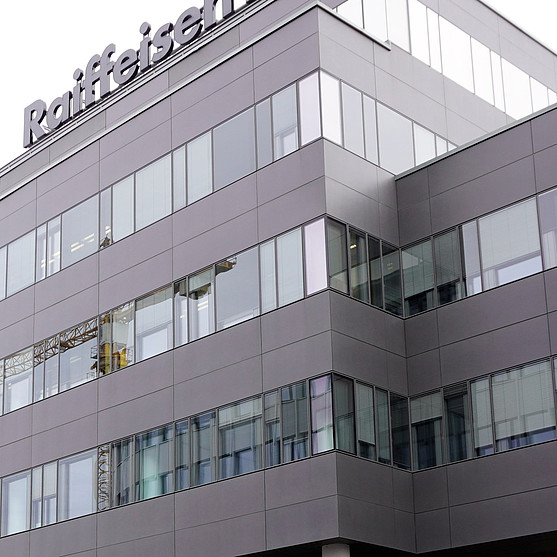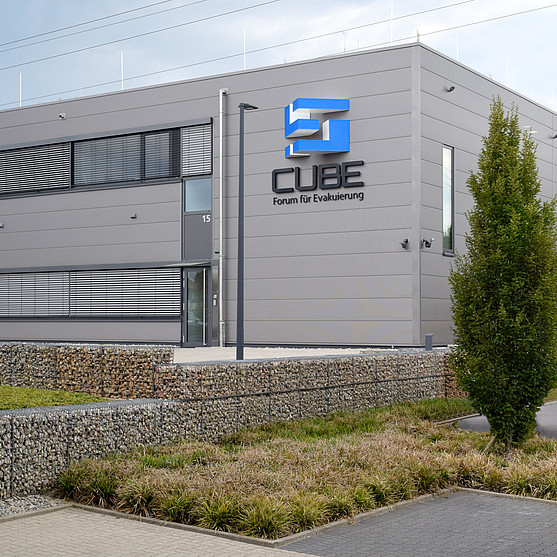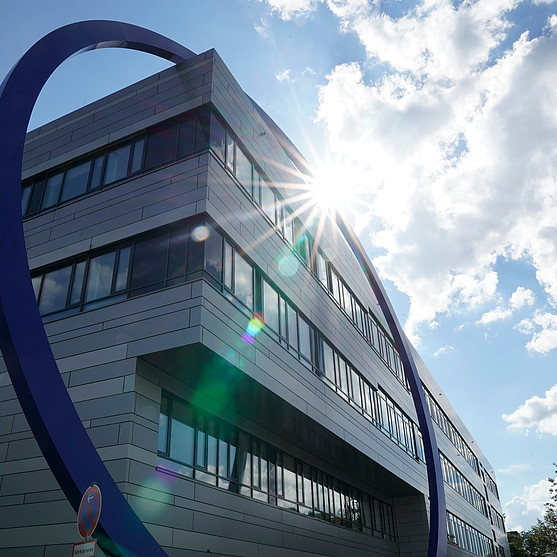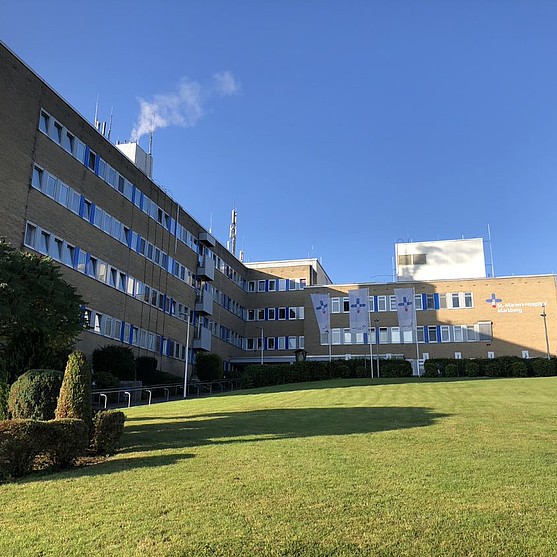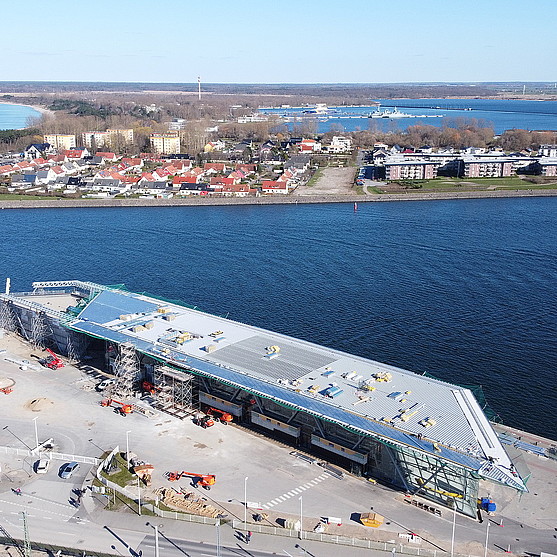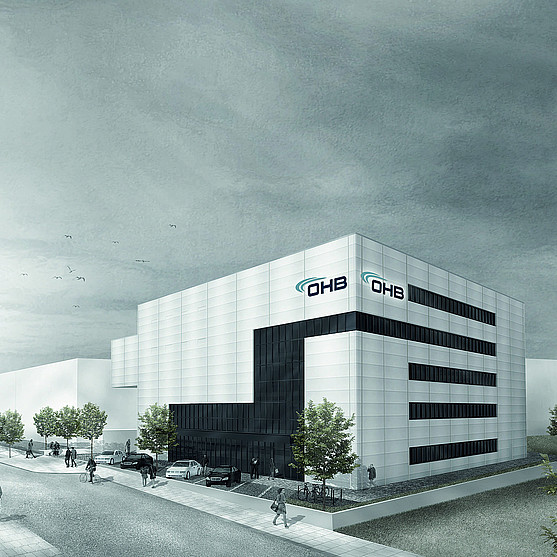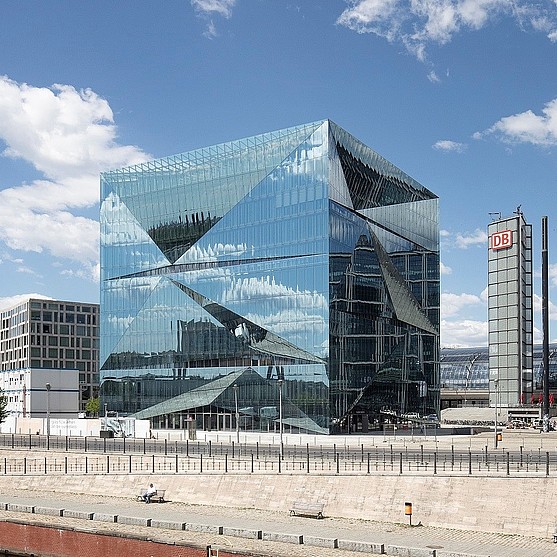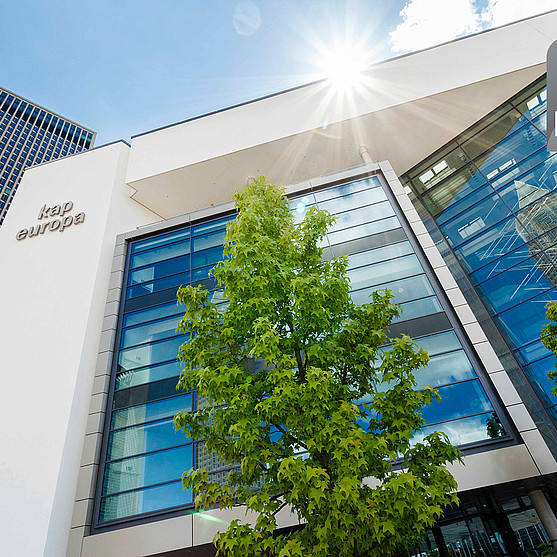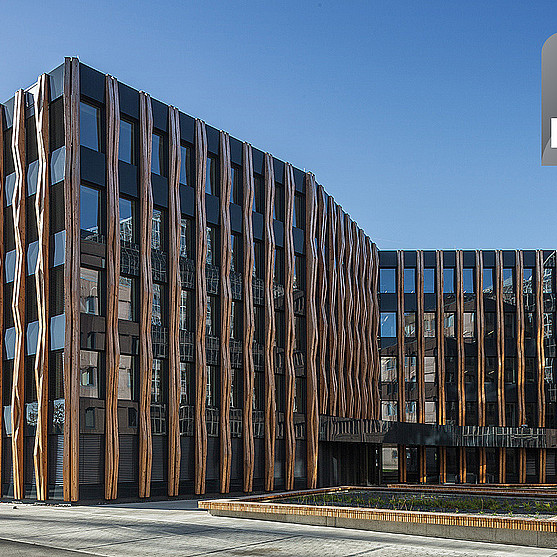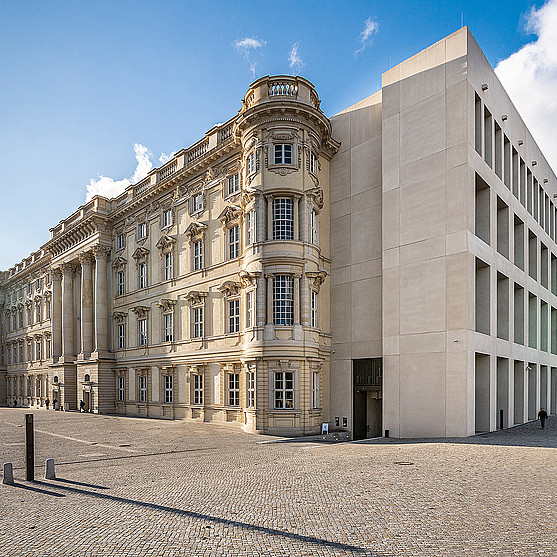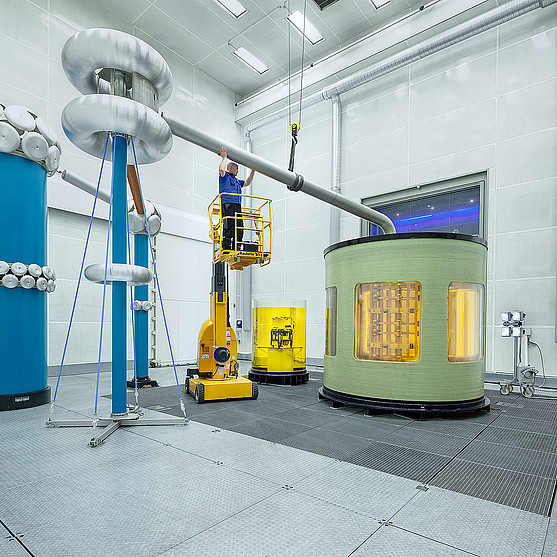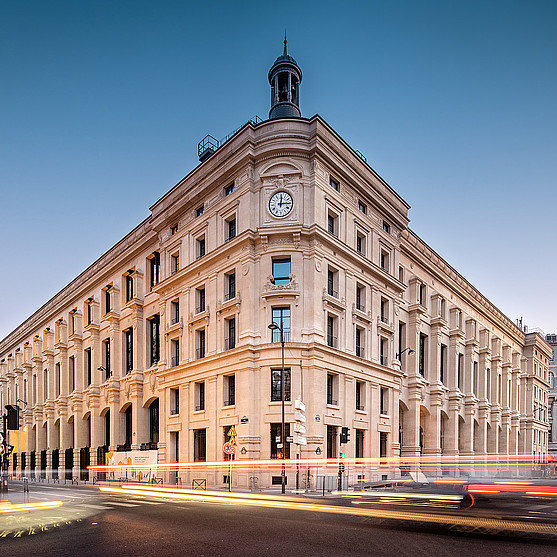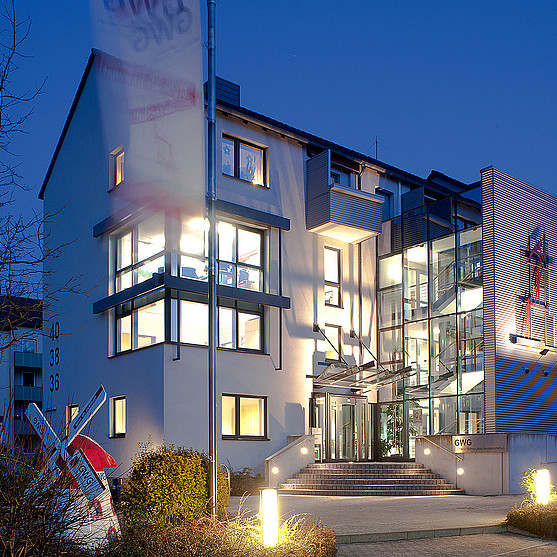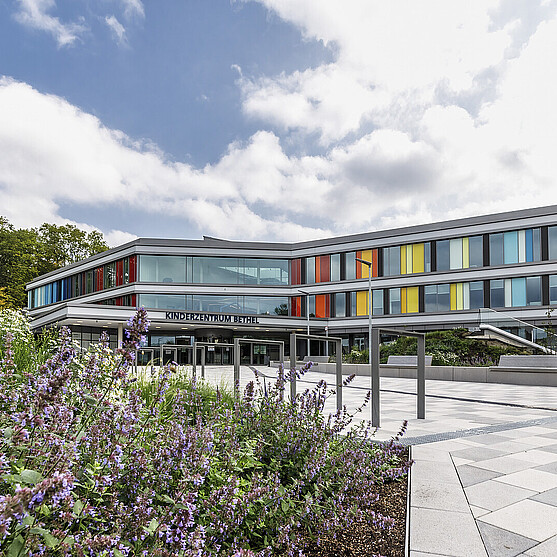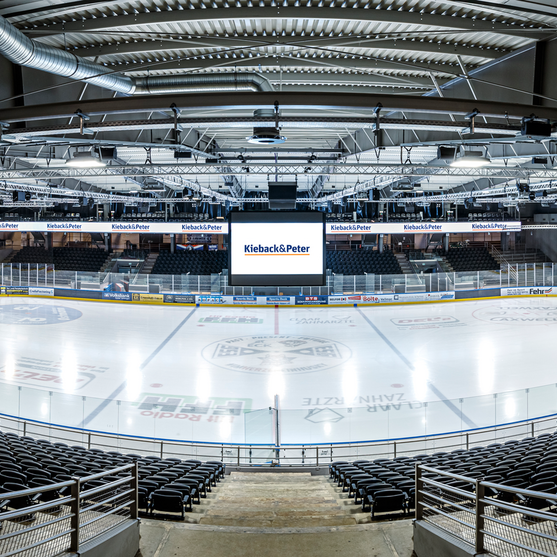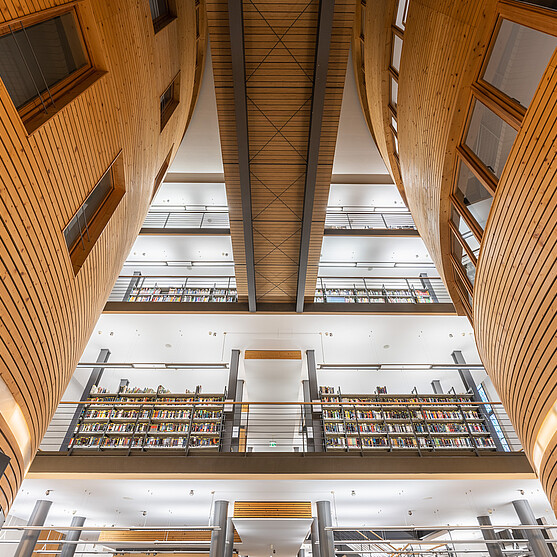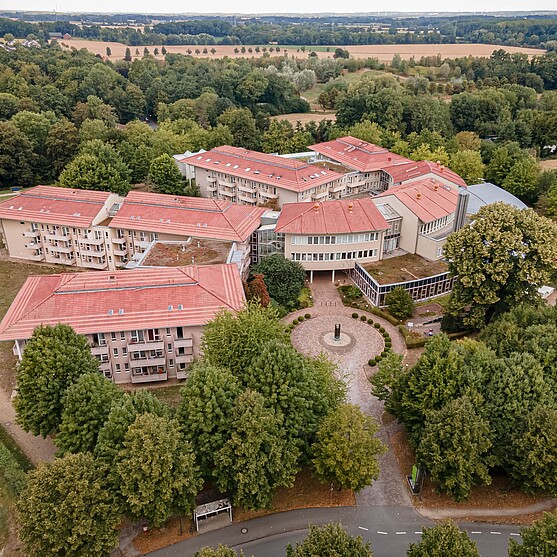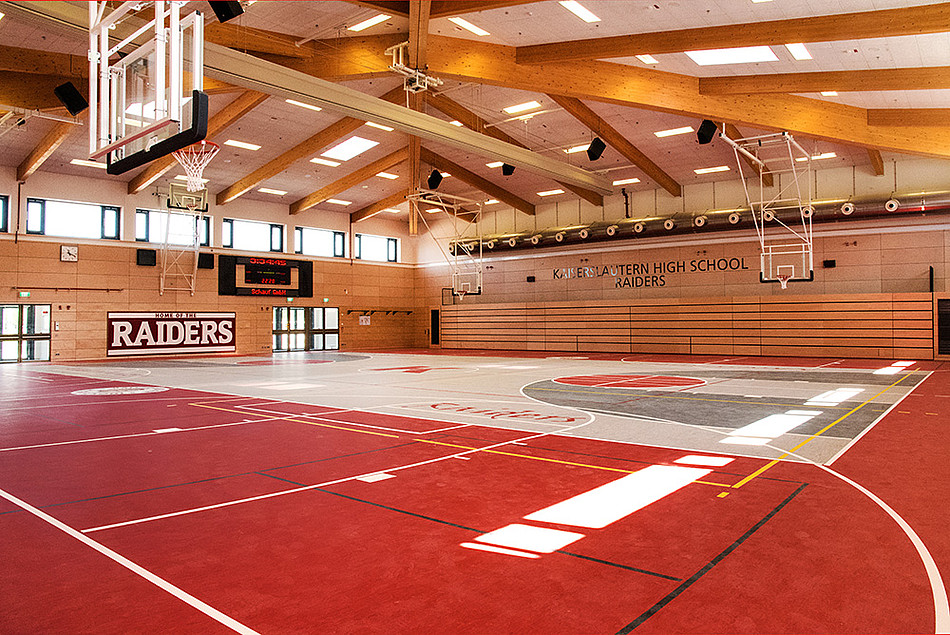
Germany has been home to one of the most modern US high schools since 2018: On the premises of the US stationed forces in Kaiserslautern-Vogelweh. The new LEED-certified building with a gross floor area of 17,200 square meters follows the American educational concept called “21st Century Learning.” The purpose is to prepare young people for a future defined by technology and media. Here, around 850 pupils from ninth to twelfth grade learn in the midst of modern architecture in spacious communal areas (known as “commons”). Instead of boxed-in classrooms with front-facing teaching, there are seven learning “neighborhoods” across two levels around the 1,600 square meter foyer, each with around 120 students that form a “learning hub.” Sliding glass walls make it possible to create separate rooms if required. Two sport halls, a concert hall and technical rooms are also available. The building contractor was looking for state-of-the-art building technology with a number of unusual systems for the project. Apart from heating and ventilation, they also wanted to ensure that the systems were energy-efficient and reliable. As there is no better choice than Kieback&Peter, they commissioned us to integrate all systems into a smart automation solution.
Not simple, just exciting
Sales engineer Philipp Kraus and his team from the Kieback&Peter Mannheim office were faced with a whole series of unusual challenges when they read the specifications of the contract for the US armed forces. It wasn’t just the large scale of the “High-School Kaiserslautern-Vogelweh” project that was exciting. The number and type of unusual special orders was also something out of the ordinary: Among other things, the building contractor wanted all text on the displays of the building management system (BMS) and automation station to be bilingual, written both in German and in English. Furthermore, twelve monitors were to be centrally controllable so that they could display information individually to the students, and numerous third-party systems had to be digitally integrated. These included, for example, self-darkening window panes as well as electricity and heat meters. In four closed-off building areas with irrigated green walls covered in plants, the Kieback&Peter system also needs to guarantee constant humidity. No easy task – “but anyone can do easy,” says Philipp Kraus.
All system components at a glance
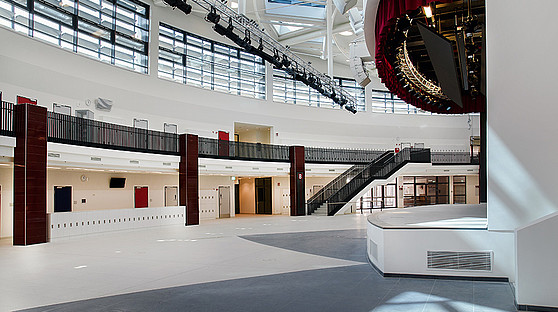
How did the team manage to complete all tasks successfully and on time? Philipp Kraus explains: “Our recipe for success consists of experienced colleagues who have been working for Kieback&Peter for a long time and the good cooperation we have with the client on site.” The essence of their automation solution – Made in Germany, Made for America – can be clearly seen in the High School’s technical room: A PC workstation with server and large flat screen on which the Neutrino BMS building management system works. Using this central monitoring and control software by Kieback&Peter, the building technicians can monitor all integrated system components and operating conditions on the intuitively understandable, graphical user interface and, if necessary, change target specifications. The system communicates with the entire building technology via cabling/IP.
Behind the building automation virtual user interface there are eight information centers, which are distributed throughout the school building. They handle the physical switching operations of the systems. The powerful and flexible DDC4200 and DDC4002 controllers operate in these control cabinets. They communicate with the Neutrino BMS, with each other and with field devices located at approximately 7,600 physical data points. Gateways also operate in the information centers. They convert the control signals from the hotel’s third-party controllers into digital signals for the DDCs.
Automatic window panes that will leave you amazed
The specific work is carried out by sensors and actuators in all High School areas: For example, CO2 sensors report the air quality to the controllers. If necessary, they increase the ventilation power using actuators. The same applies to humidity regulation in the areas with green walls: Based on the measurements taken by the humidity sensors, the controllers tell actuator motors (actuators) to open windows wider or close windows more. The integration of the darkening glass panes in the auditorium is particularly interesting: The user can determine the degree of darkness via a touch panel. The BACnet command from the controller sends control signals to the window panes, where a metal coating provides a steplessly variable darkening effect.
If set to automatic mode, the windows darken automatically in strong sunlight to prevent the room from heating up too much. The team has integrated the digital heating and electricity meters for energy management into the building automation system via M-Bus or LON – the flexible DDC controllers also govern these protocols natively as well as BACnet. The twelve monitors, on which information can be individually displayed by the school management, were integrated by the technicians via IP. Each monitor has its own IP address so that different content can be displayed, such as the cafeteria menu or school information. The team also fulfilled the building contractor’s wish to be able to present all system texts in German and English: Any German text was translated by professionals and integrated into the system. Additionally, the building contractor received instructional videos in both languages. Despite many tricky challenges, the Kieback&Peter team always gets the job done.

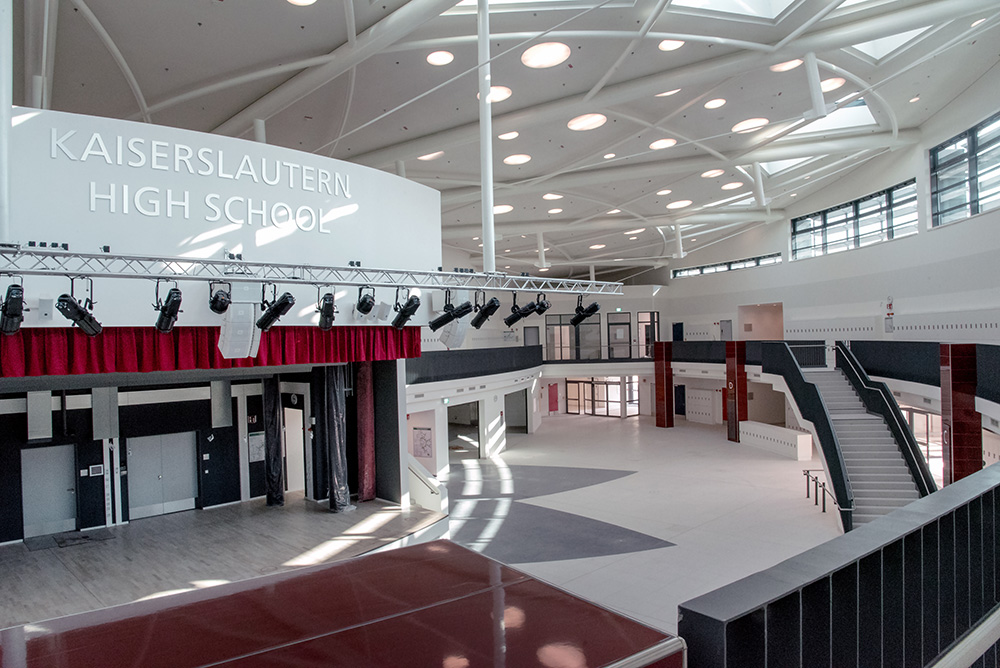
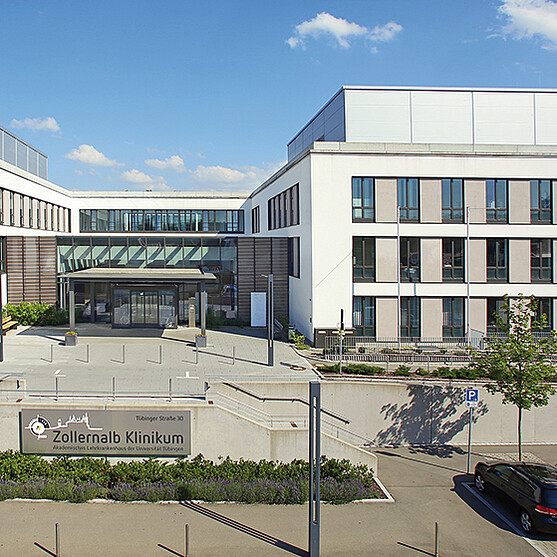
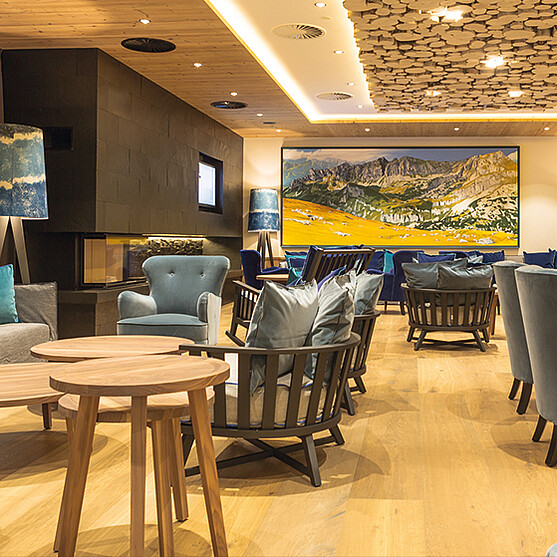
![[Translate to Englisch:] Elbdeck [Translate to Englisch:] Elbdeck Hamburg](/fileadmin/_processed_/9/b/csm_11_Deutschland_Hamburg_Elbdeck_c766930218.jpg)
![[Translate to Englisch:] Qu4drans Paris [Translate to Englisch:] Qu4drans Paris](/fileadmin/_processed_/f/2/csm_Qu4drans_7e0a58bc67.jpg)
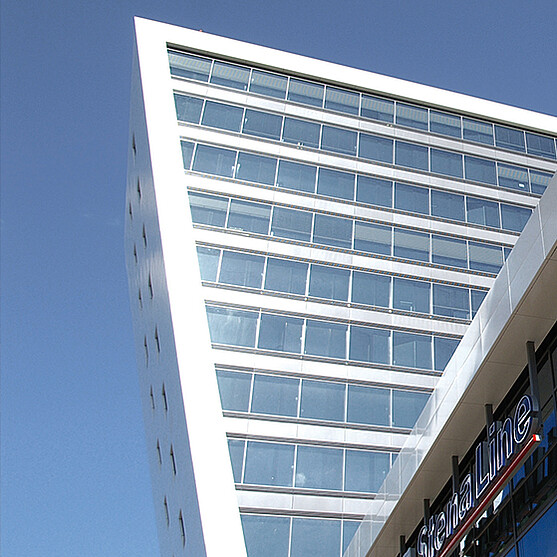
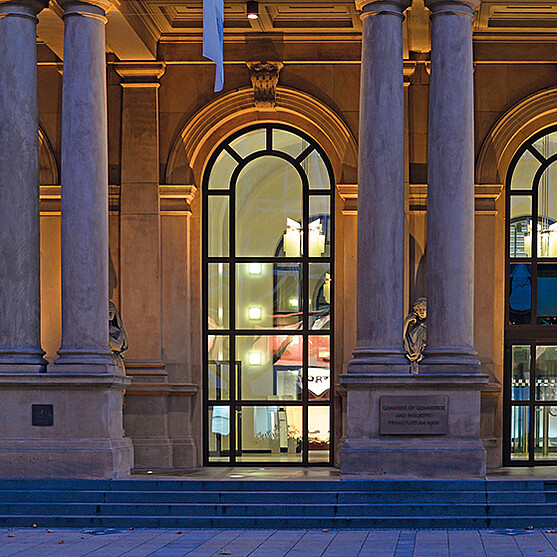
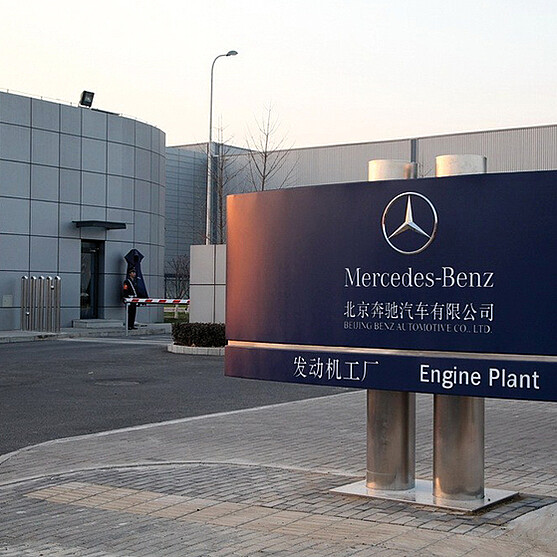
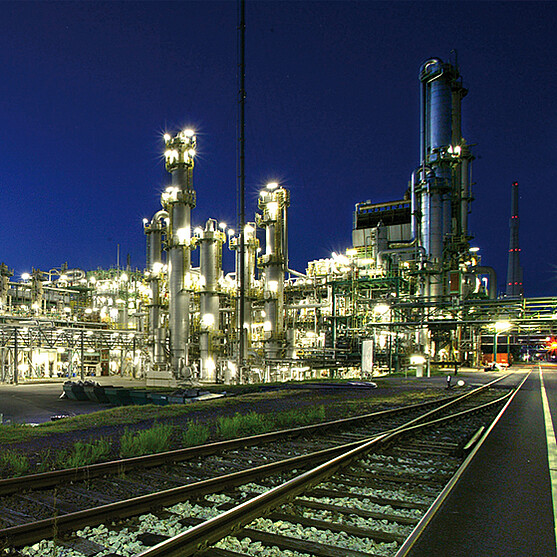
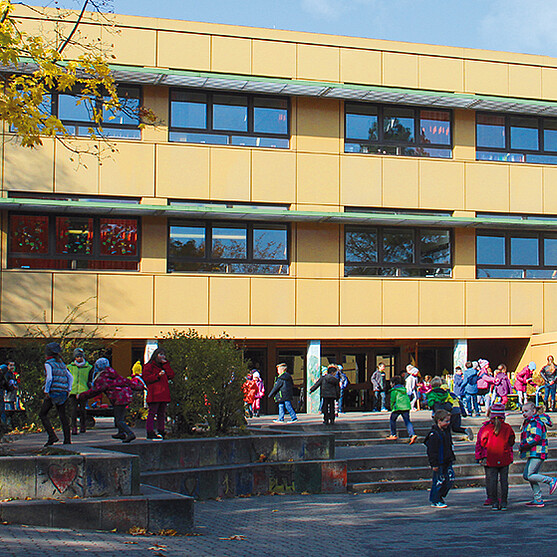
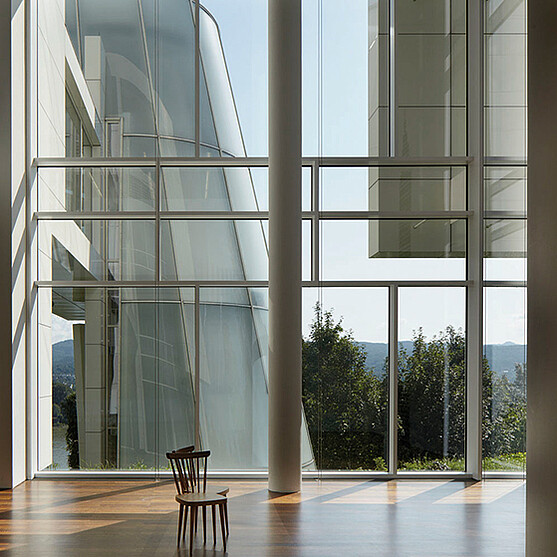
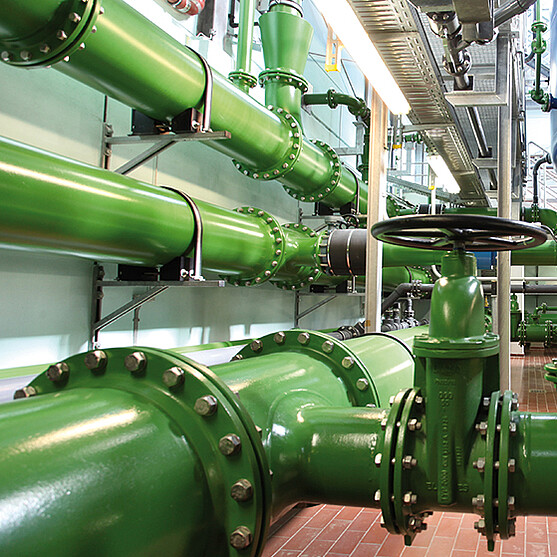
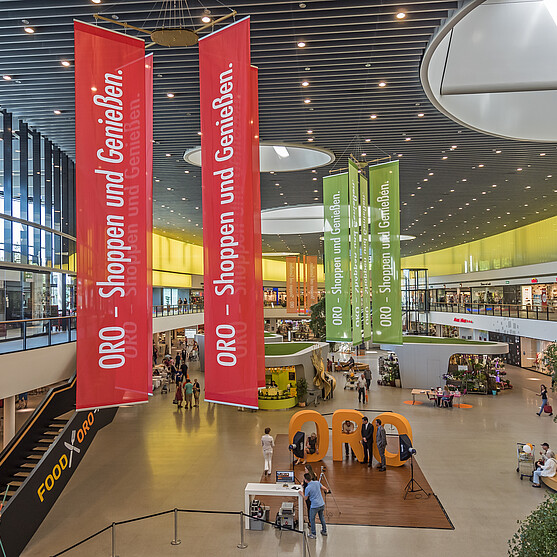
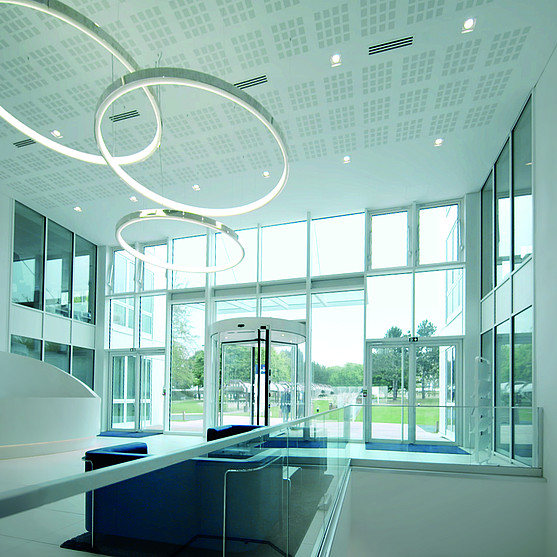
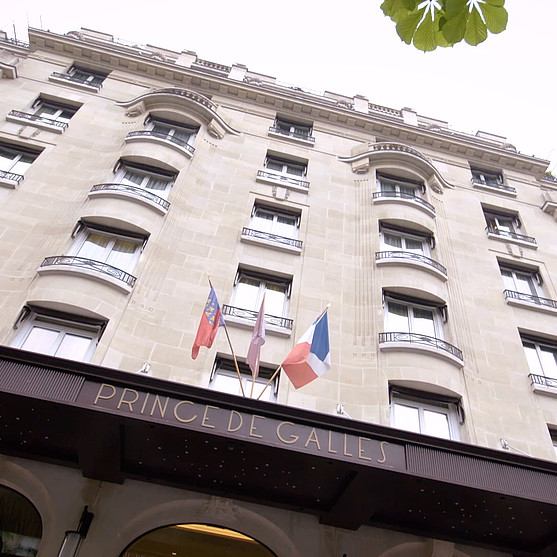
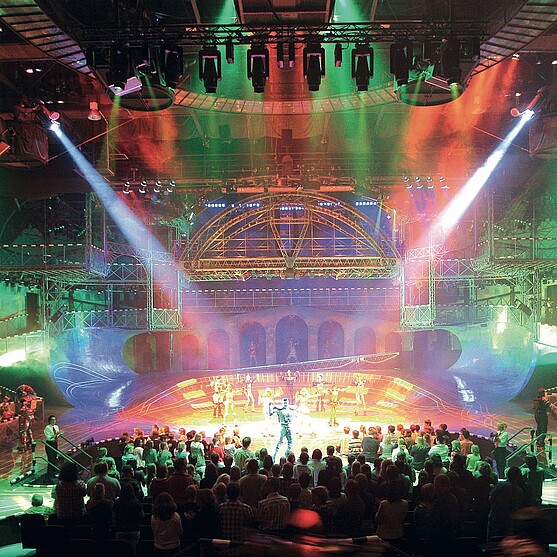
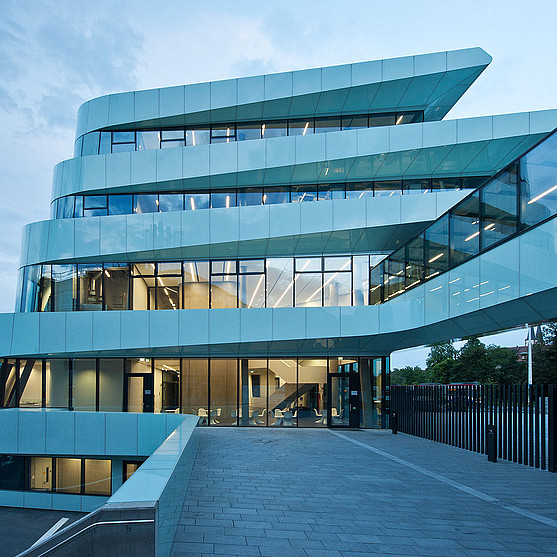
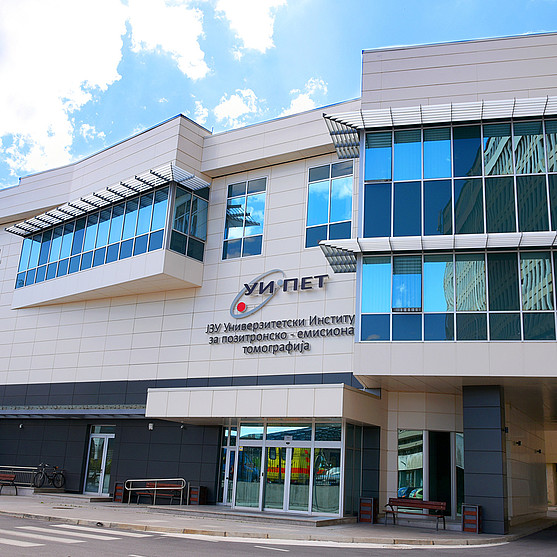
![[Translate to Englisch:] [Translate to Englisch:]](/fileadmin/_processed_/3/d/csm_L_T_Sporthaus_Osnabrueck_Indoor_kieback-peter_d47dda6a97.jpg)
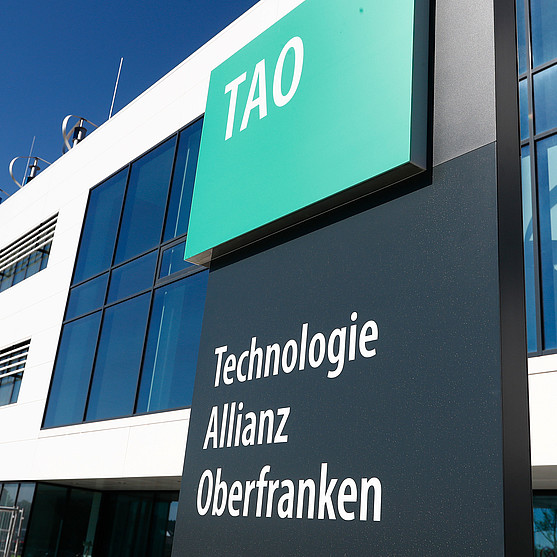
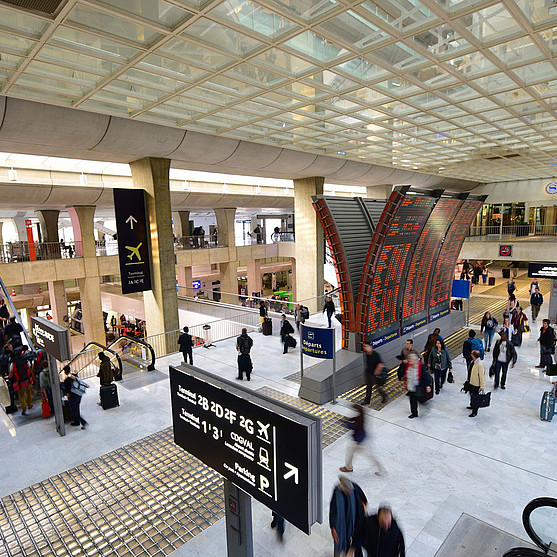
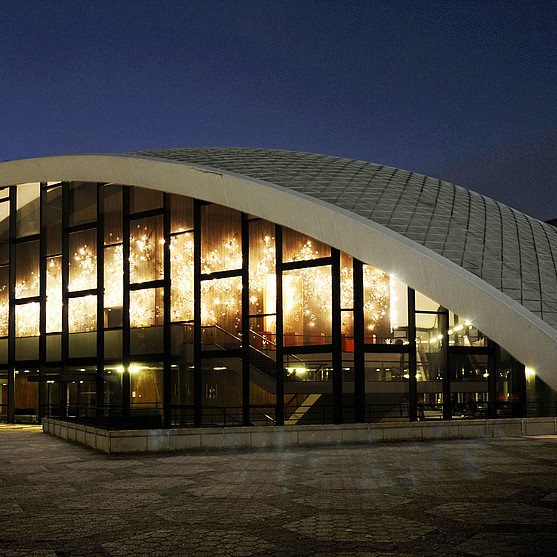
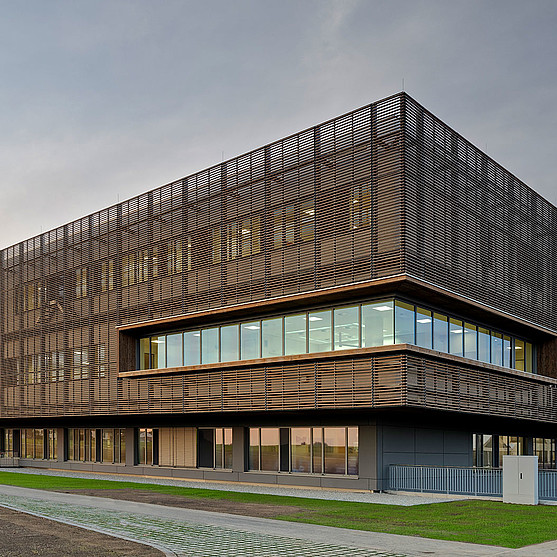
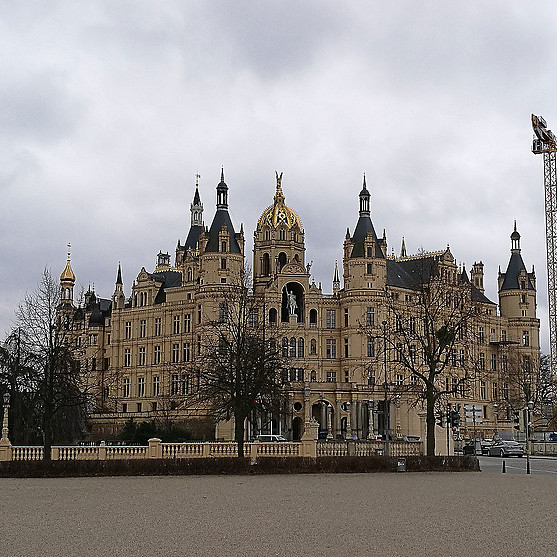
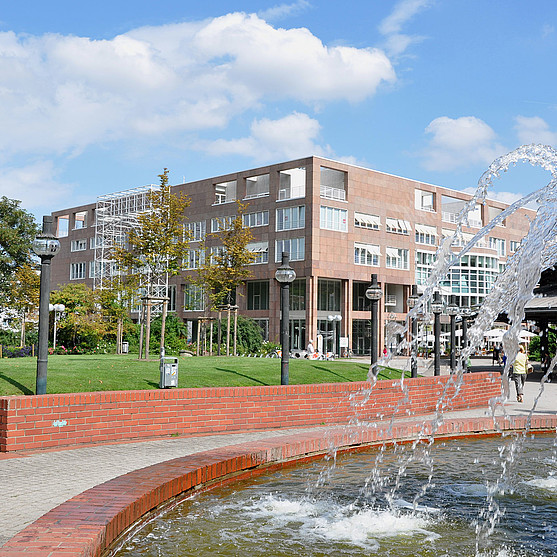
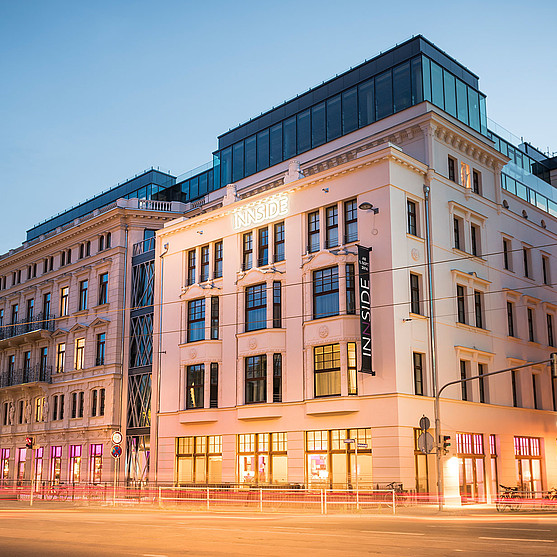
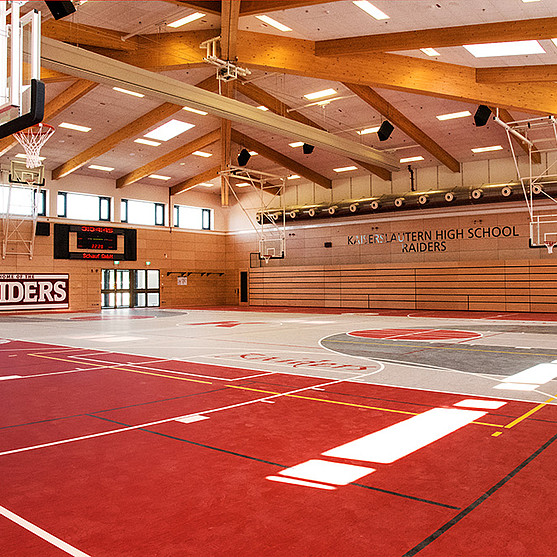
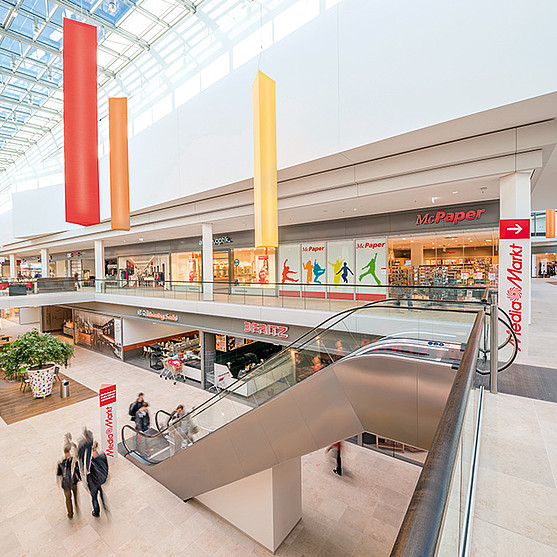
![[Translate to Englisch:] [Translate to Englisch:]](/fileadmin/_processed_/6/f/csm_flevo-krankenhaus-aussenansicht-kieback-peter_7f540b4b4f.jpg)
